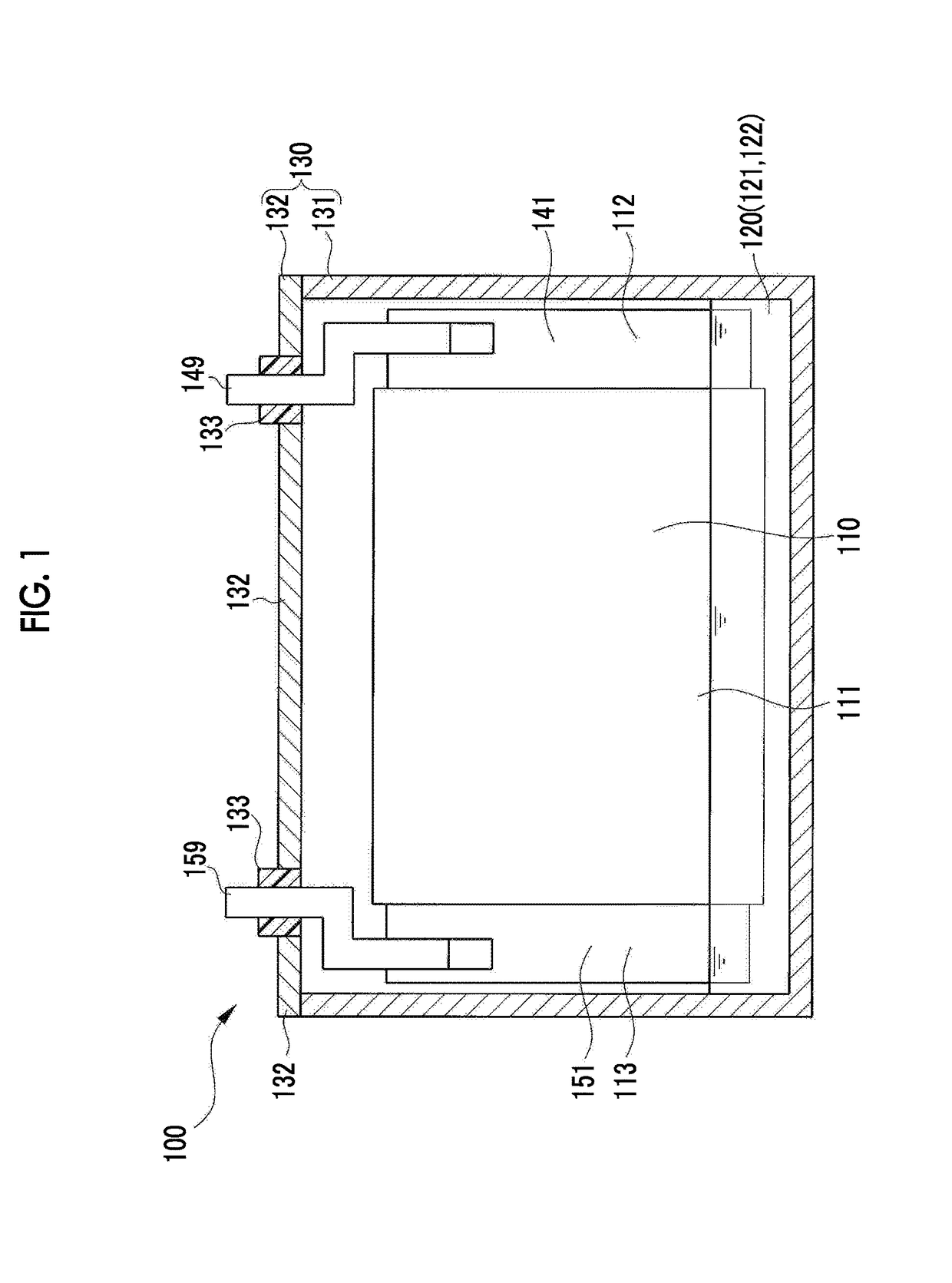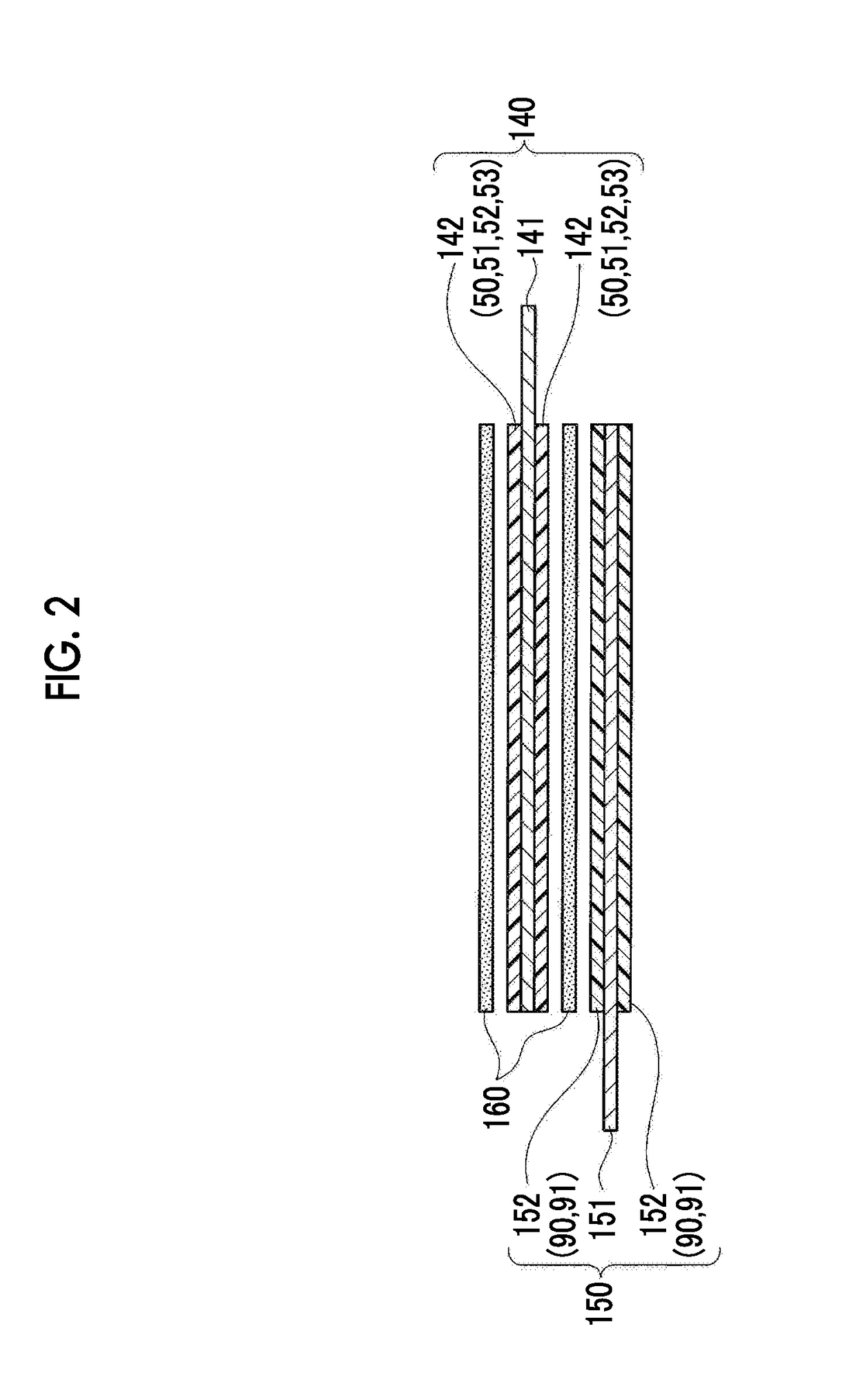Method of manufacturing lithium ion secondary battery
a lithium ion secondary battery and manufacturing method technology, applied in the manufacture of final products, cell components, electrochemical generators, etc., can solve the problems of oxidizing the electrolytic solution, requiring a long time to mix the electrode materials, and requiring a long time to cure the battery. , to achieve the effect of excellent input and output characteristics
- Summary
- Abstract
- Description
- Claims
- Application Information
AI Technical Summary
Benefits of technology
Problems solved by technology
Method used
Image
Examples
first embodiment
[0032]First, a battery 100 (refer to FIG. 1) which is manufactured using a method according to the embodiment will be described. FIG. 1 is a diagram showing a schematic configuration of the battery 100 according to the embodiment. As shown in FIG. 1, the battery 100 is a lithium ion secondary battery in which an electrode body 110 and an electrolytic solution 120 are accommodated in a battery case 130. The battery case 130 includes a case body 131 and a sealing plate 132. The sealing plate 132 includes an insulating member 133.
[0033]The electrolytic solution 120 according to the embodiment is a nonaqueous electrolytic solution in which an electrolyte 122 is dissolved in a nonaqueous solvent 121. As the nonaqueous solvent 121 of the electrolytic solution 120, for example, an organic solvent such as ethylene carbonate (EC), ethyl methyl carbonate (EMC), or dimethyl carbonate (DMC) can be used.
[0034]In the electrolytic solution 120 according to the embodiment, as the electrolyte 122, l...
second embodiment
[0084]Next, a second embodiment will be described. Even in the second embodiment, the lithium ion secondary battery to be manufactured is the same as that in the first embodiment. In addition, even in the second embodiment, the wet granulated body is formed, and the positive electrode sheet is manufactured by performing the film forming step using the wet granulated body. However, the second embodiment is different from the first embodiment in the procedure of forming the wet granulated body.
[0085]FIG. 6 shows the procedure of forming a wet granulated body 72 according to the embodiment. Even in the second embodiment, in order to form the wet granulated body 72, the active material 50, the conductive material 51, the binder 52, and the LPO 53 are used. In addition, even in the second embodiment, as shown in FIG. 6, not only the positive electrode materials but also the solvent 54 are used to form the wet granulated body 72. That is, the materials used for forming the wet granulated ...
examples
[0100]Next, Examples according to the first embodiment or the second embodiment and Comparative Examples will be described. First, in Examples and Comparative Examples, positive electrode sheets were prepared using different examples. Further, lithium ion secondary batteries were prepared using the prepared positive electrode sheets. The lithium ion secondary batteries according to Examples and Comparative Examples were prepared using the same method and the same components including the negative electrode sheet and the like except for the positive electrode sheet.
[0101]The materials such as an active material used for the preparation of the positive electrode sheets according to Examples are shown below.
[0102]Active material: LiNi1 / 2Mn3 / 2O4
[0103]Conductive material having an average particle size of 50 μm: AB having an average particle size of 0.1 to 1 μm
[0104]Binder: PVdF
[0105]Additive: LPO having an average particle size of 3 μm
[0106]Solvent: NMP
[0107]In addition, proportions of...
PUM
 Login to View More
Login to View More Abstract
Description
Claims
Application Information
 Login to View More
Login to View More - R&D
- Intellectual Property
- Life Sciences
- Materials
- Tech Scout
- Unparalleled Data Quality
- Higher Quality Content
- 60% Fewer Hallucinations
Browse by: Latest US Patents, China's latest patents, Technical Efficacy Thesaurus, Application Domain, Technology Topic, Popular Technical Reports.
© 2025 PatSnap. All rights reserved.Legal|Privacy policy|Modern Slavery Act Transparency Statement|Sitemap|About US| Contact US: help@patsnap.com



